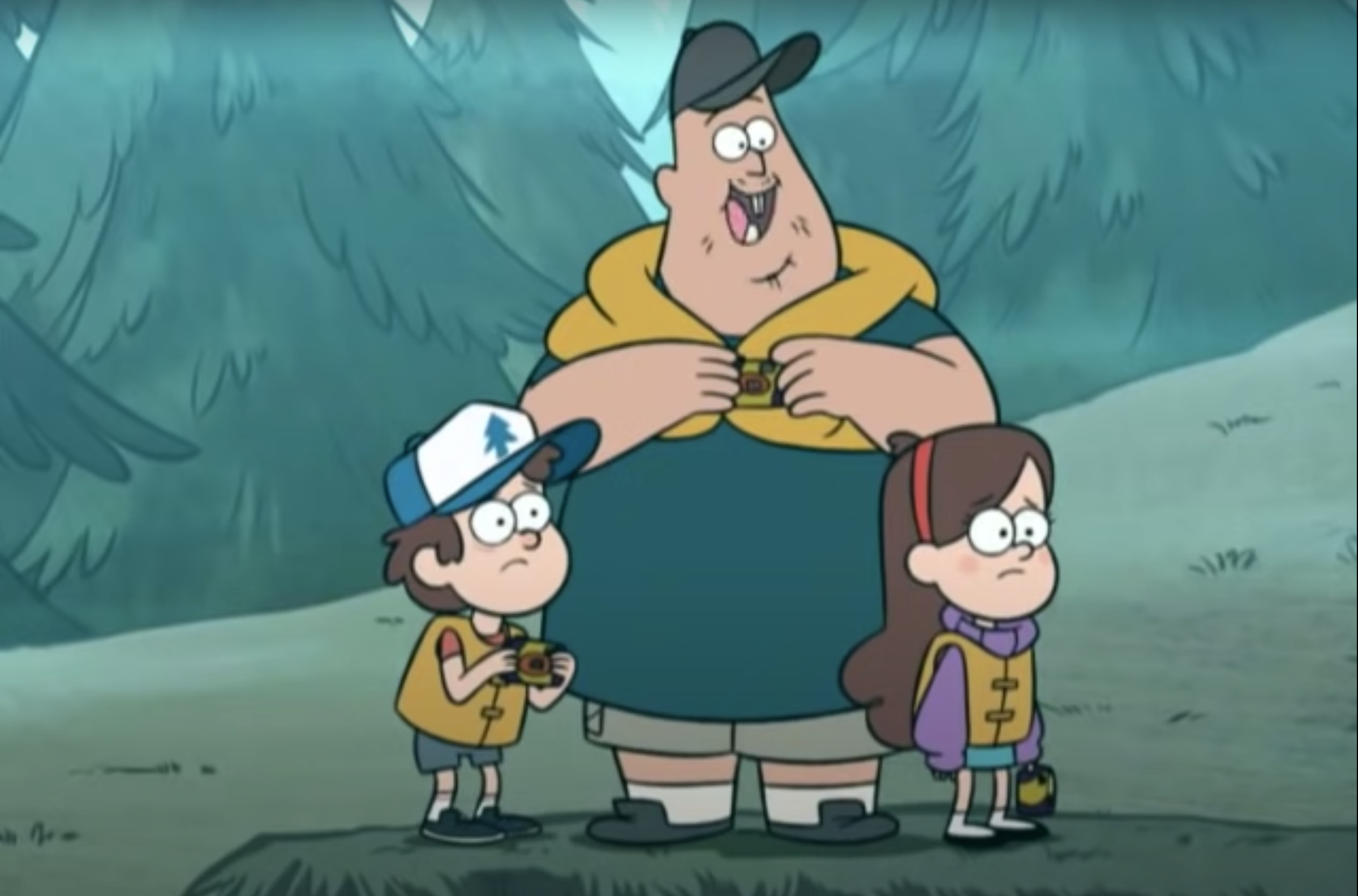“Fantasy Americana” isn’t necessarily a genre, but the term can be applied to works set in the United States that combine the country’s folklore, culture or history with speculative elements. Listed below are a few films, television shows and novels that encapsulate the idea of a fantastical America.
1. “Sparrow Hill Road”
“Sparrow Hill Road” is the first book in a series by Seanan McGuire, but it also works as a stand-alone story. It centers around Rose Marshall, a young woman and hitchhiking ghost who has become an urban legend among the living. Rose was killed by a man named Bobby Cross in 1952 as a way to gain immortality. In the present day, she travels the highway evading Bobby Cross. She also tries to help others escape him, and when she can’t, she acts as a psychopomp.
Rose’s character greatly resembles the Chicago-area legend of Resurrection Mary. Mary, a young woman, was struck and killed while leaving a ballroom one night. Afterward, she began appearing to drivers and asking them to drop her off at the Resurrection Cemetery. A common feature of this urban legend is the driver lending the young woman their coat, which is then either left on the passenger’s seat or draped over the headstone. In “Sparrow Hill Road,” Rose is able to gain a tangible form when she is lent an article of clothing — most often a coat.
The book also reflects the way the United States is connected through roads. Rose can travel on human roads, but she can also travel on the ghost roads. The fantasy Americana in “Sparrow Hill Road” comes from its depiction of America’s roads as possessing an unseen underworld.
2. “Gravity Falls“
This cartoon was created by Alex Hirsch and aired on the Disney Channel from 2012 to 2016. Twin siblings Dipper and Mabel Pines are sent up to the town of Gravity Falls, Oregon, for the summer to live with their Great Uncle Stan. Their great uncle, or “Grunkle,” runs a tourist trap he calls “The Mystery Shack.” The oddities inside are fake, but Dipper is convinced that there is something odd about the town. His suspicions are confirmed when he discovers a journal buried in the woods. This journal has a six-fingered handprint on the cover and documents various cryptids and phenomena. With Mabel’s help, Dipper sets out to discover the secrets of the town and the author’s true identity.
Tourist traps and roadside attractions, such as the Oregon Vortex, served as inspirations for the series. The show also features cryptids, which are a large part of North American folklore: The hidebehind shows up in a short and a Fiji mermaid can be seen in the background of the Mystery Shack.
3. “American Gods”
This novel by Neil Gaiman centers around a man named Shadow Moon. Shadow is released from prison only to find that his wife has recently died. While on the plane, a mysterious man named Mr. Wednesday offers him a job, which he initially rejects. Throughout the story, Shadow finds himself embroiled in a battle between the old gods and the new ones.
With gods and other legendary figures hailing from places around the world, including India, Ireland, Egypt and West Africa, “American Gods” cements the United States’ status as a melting pot. The new gods of Media and Technology also pit America’s past against its present and future.
4. “The Diviners”
“The Diviners” is the first book in a series written by Libba Bray. It begins with Evie O’Neil, a girl with the power to divine the past of an object, being sent to live with her uncle in New York. As a flapper, Evie is overjoyed to leave behind her hometown in Ohio for the glamor of the city. However, when an occult serial killer dubbed “The Pentacle Killer” begins leaving bodies around New York, Evie’s uncle is drawn into the case. Evie tags along.
The series showcases the pop culture of the Roaring ’20s with speakeasies, large parties, Ziegfeld Girls and radio shows. It also features the occult, American involvement in World War I and secret government projects. The fantasy Americana in this story comes from the lively depiction of 1920s New York.
5. “O Brother, Where Art Thou?”
Written and directed by the Coen brothers, this film takes place in Depression-era Mississippi. The protagonist, Ulysses Everett McGill, is a prisoner who receives word that his wife, Penny, is remarrying. In order to escape the chain gang, Everett convinces the two other people that he is chained to that he has buried treasure he needs to retrieve before the Tennessee Valley Authority floods the area. The three men escape and make their way to Everett’s hometown of Ithaca. Along the way, they meet a guitar player who has sold his soul and try to outrun a sheriff who may or may not be human.
The film is a retelling of Homer’s “Odyssey.” Ulysses is a version of the name Odysseus, Penny is short for Penelope and Everett’s fellow prisoners Pete and Delmar stand in for Odysseus’ crew. On the way to Ithaca, the men encounter a blind prophet, beautiful singing women and an evil, one-eyed Bible salesman.
The film is also steeped in American culture and history. The soundtrack consists of bluegrass songs like “I’ll Fly Away” and “Man of Constant Sorrow.” Historical figures and names are used throughout the film, too, with Governor Pappy O’Daniel, gangster George “Baby Face” Nelson and blues guitar player Tommy Johnson each making an appearance.
6. “Twin Peaks”
The television show aired in 1990 for two seasons and was directed by Mark Frost and David Lynch. The story begins when the body of homecoming queen Laura Palmer is discovered washed up on the shore and wrapped in plastic. The police of Twin Peaks are stumped and FBI Agent Dale Cooper is called onto the scene. What appears to be a straightforward murder case quickly devolves into something very, very strange.
“Twin Peaks” combines aspects of a melodramatic soap opera, quaint small-town America and Lynchian weirdness. The town is idealistic on the surface; Cooper notes how much he loves the trees and the wilderness and ponders buying property in the area. Beneath the facade, however, Twin Peaks is made up of strange otherworldly beings, demons and a strange kind of purgatory.
7. “Old Gods of Appalachia”
This story is an anthology horror podcast set in the Appalachian Mountains and written by Steve Shell and Cam Collins. The series jumps around in time but mainly takes place in the early 20th century, a time when the coal and rail industries were booming and workers were fighting to unionize. The series features many different characters such as the Walker sisters, a family of good witches; Daughter Dooley, the Witch Queen; and Cowboy Absher, an immortal young boy. The main villain of the series is the joint mining and railroad corporation named Barrow and Locke. Ultimately, the series is about the battle between good and evil. The podcast deals heavily in Appalachian folklore. Names and plots are drawn from traditional ballads like “Pretty Polly” and “In the Pines.” Other monsters, like Skint Tom, are featured as well.
8. “Ghost Wood Song”
“Ghost Wood Song” is a book written by Erica Waters that was published in 2020. The story, which is set in Florida, follows protagonist Shady Grove as she sets out to find her late father’s fiddle after her stepfather is murdered. Shady’s brother is the main suspect, and since her father’s fiddle can summon the spirits of the dead, Shady believes that it can prove his innocence. The fiddle is cursed, however, and the more that Shady plays it, the more dangerous things become.
The novel is steeped in bluegrass and country music: Shady is named after a famous bluegrass song and is the fiddler in a small band. Other characters in the story play the banjo, the guitar and the mandolin. Traditional songs like “I’ll Fly Away” and newer songs such as “A Boy Named Sue” also feature in the story.
9. “Hadestown”
Like “O Brother, Where Art Thou?” this musical is a retelling of a Greek myth. It takes the tragedy of Orpheus and Eurydice and transplants them into an American-like setting. Rather than being set in the land of the dead, the underworld is now an underground factory and mine named Hadestown. Times are hard, and although Eurydice loves Orpheus and his music, she fears that alone cannot provide for them. She is tempted by the shelter and safety Hadestown is said to offer, but soon becomes trapped there. Orpheus follows Eurydice into Hadestown via the railroad and riles up the workers. Hades eventually lets Eurydice leave under the condition that Orpheus not turn around until they exit the underworld completely. However, as the story goes, Orpheus begins to worry and have doubts. When he turns to check that Eurydice really is behind him, he loses her.
The setting of Hadestown greatly resembles a company town in which workers were mistreated and paid in scrip rather than actual money. The road into hell is found on the train tracks and the time period resembles the early 20th century. For example, Persephone runs a speakeasy where she offers glimpses of the outside world rather than booze. The music of the musical is made up of genres that originated in the U.S., such as jazz and blues.
10. “Over the Garden Wall”
This cartoon miniseries aired in 2014 and was created by Patrick McHale. Two half-brothers, Wirt and Greg, find themselves lost in the woods and wander from place to place, looking for a way back home. They are helped by a talking bluebird named Beatrice, who volunteers to lead them to a good witch who can send them home. The brothers are also followed by a mysterious woodsman and stalked by a malevolent entity known as The Beast.
The plot greatly resembles a European fairytale, but the aesthetics and soundtrack of the show are very American. The setting resembles New England in the fall, and the brothers travel by riverboat at one point. There are cornfields, turkeys, pumpkin people, and other flora and fauna native to the region. The title card contains a winged skull, a symbol used by the Puritans. The soundtrack is made up of American music as well, with jazz, ragtime and folk songs.
These fantasy Americana stories all differ from one another. Though some are similar, they all fall into different genres. There is horror, mystery, adventure, tragedy, and comedy. The thing they do have in common is their use of culture. Whether it’s the music used, the aesthetic, the time period, or the folklore, each of these stories encapsulates the idea of fantasy Americana in their own way.

















